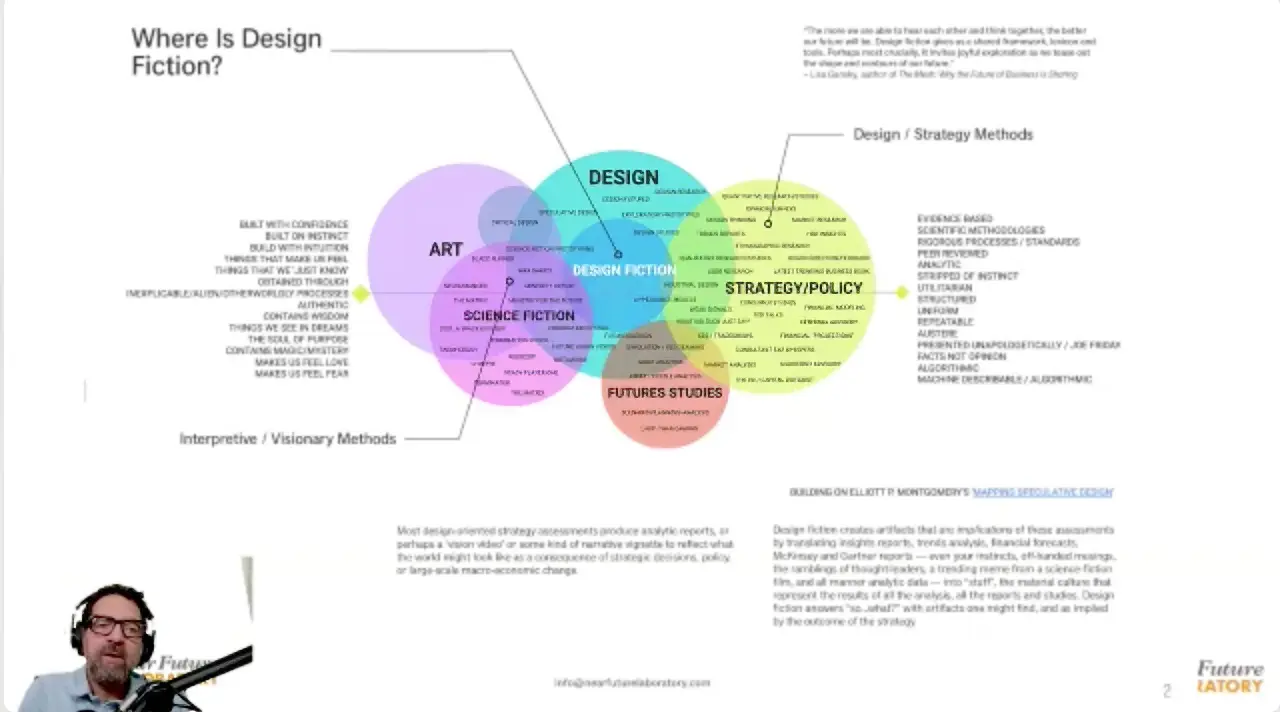
Talk Date: 10/6/22, 11:32 PM
Published On: Oct 6, 2024, 23:32
Updated On: Oct 6, 2024, 23:32
Creating Future Possibilities with Design Fiction at the Dyson School of Design Engineering
Presenting at the Dyson School of Design Engineering was an exciting opportunity to dive into the fascinating world of Design Fiction, a concept and practice that I am deeply passionate about. This methodology allows us to explore possibilities and imagine futures by creating tangible artifacts that embody potential scenarios in an evocative way.
During my presentation, I shared my journey and evolution in the field, from my background in electrical engineering and history of consciousness, to my explorations in user experience design and virtual reality. Throughout this journey, I’ve always been driven by the question, “What would it look like if you could do design and fiction simultaneously?” This question has led me to new collaborations, such as with Bruce Sterling, and helped to form the foundation of Design Fiction as a practice.
Understanding Design Fiction
Design Fiction involves creating prototypes from possible near futures to explore and visualize the consequences of decision-making. These aren’t just fictional stories, but rather tangible, evocative objects or scenarios that prompt discussion and consideration of future possibilities. I emphasized that the power of Design Fiction lies in its ability to transform the imagination into material culture, bridging the gap between speculative thought and actual manifestation.
Examples of Design Fiction in Action
Throughout the session, I shared various examples of how Design Fiction can be utilized. One notable project was a collaboration with IKEA, where we imagined what their iconic catalog might look like in a future context. By creating an IKEA advertisement for a speculative product, we explored new material possibilities and consumer interactions, highlighting how imagination can shape future brand and product development.
Another interesting project was creating a map for the city of Geneva that considered future scenarios involving autonomous vehicles. This map imagined how mixed-mode transportation could alter city layouts and regulations, providing a thought-provoking glimpse into potential future urban challenges and opportunities.
The Importance of Imagination in Innovation
I also discussed how imagination acts as a precursor to innovation. Using examples like wheeled luggage and the creation of jogging, I illustrated how seeing possibilities where others see constraints or impossibilities leads to groundbreaking innovations. This shift in perspective is what Design Fiction seeks to cultivate—seeing what might be, rather than being fixated on the current reality or limitations.
Cultivating the Imagination for Future Generations
A significant part of the discussion revolved around fostering imagination, especially in educational contexts. I proposed imagining possibility as a practical skill taught alongside conventional subjects, encouraging young minds to explore their futures creatively and pragmatically.
Conclusion: Embracing the Future Through Design Fiction
The presentation hopefully reinforced the idea that by leveraging our imaginations through Design Fiction, we can open up new avenues for creativity, innovation, and understanding of future possibilities. This practice encourages us to think beyond traditional constraints and explore what could be, effectively equipping us to navigate and shape the future in more informed and imaginative ways.
I am excited to continue these discussions and collaborations, as they are quintessential to shaping not just the future of Design, but also our collective approach to addressing emerging challenges and opportunities.